Conversational AI vs Generative AI Use Cases in 2025
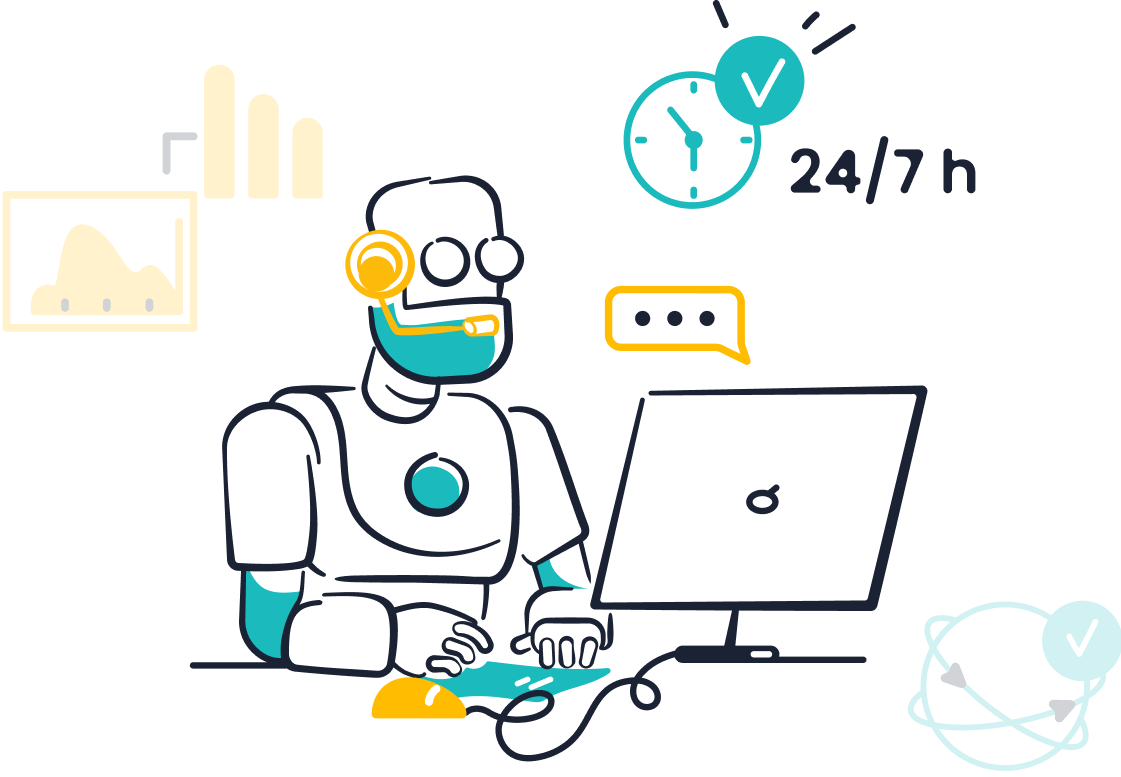
In 2025, the debate between conversational AI vs generative AI highlights their transformative impact on business operations and customer interactions. Conversational AI drives real-time engagements through tools like chatbots and voice assistants, delivering instant support and tailored experiences. Meanwhile, generative AI focuses on creating original content, streamlining tasks such as crafting marketing copy and generating media.
Both technologies offer significant benefits. Conversational AI, for example, can cut customer service costs by 30%, while generative AI has the potential to generate up to $4.4 trillion in annual economic value. Leveraging advanced tools like Sobot's AI solutions, businesses can enhance efficiency, elevate customer satisfaction, and maintain a competitive edge in today's dynamic market.
Understanding Conversational AI and Generative AI
What is Conversational AI?
Conversational AI refers to technologies that enable machines to engage in human-like dialogue. These tools, such as chatbots and virtual assistants, use natural language processing (NLP) and machine learning to understand and respond to user queries. You’ve likely interacted with conversational AI tools when asking a virtual assistant for weather updates or chatting with a customer service bot online.
The global conversational AI market is growing rapidly. By 2025, it is expected to reach $14.29 billion, driven by advancements in voice recognition and computer vision. Businesses are adopting conversational AI to improve customer experiences, reduce costs, and provide 24/7 support. For example, Sobot’s AI Chatbot offers multilingual support and operates around the clock, helping businesses handle inquiries efficiently while cutting expenses by up to 50%.
What is Generative AI?
Generative AI focuses on creating new content, such as text, images, or videos, by learning from existing data. Unlike conversational AI, which focuses on dialogue, generative AI produces original outputs. For instance, it can generate marketing copy, design visuals, or even compose music.
This technology is transforming industries. In 2023, the generative AI market generated $67 billion in revenue, and it is projected to reach $217 billion by 2025. Businesses use generative AI to personalize customer engagement, optimize marketing strategies, and create knowledge bases. Sobot’s AI solutions leverage generative AI to enhance customer interactions and streamline operations, making them a valuable tool for modern businesses.
Key Differences Between Conversational AI and Generative AI
| Feature | Conversational AI | Generative AI |
|---|---|---|
| Purpose | Facilitates dialogue and real-time support | Creates original content |
| Primary Use Cases | Chatbots, virtual assistants | Marketing content, media generation |
| Core Technology | NLP, machine learning | Deep learning, large language models (LLMs) |
| Interaction Style | Two-way communication | One-way content creation |
While conversational AI focuses on real-time interactions, generative AI excels in producing creative outputs. Both technologies have unique use cases and applications, but they often complement each other. For example, a chatbot powered by generative AI can provide human-like responses, enhancing customer satisfaction.
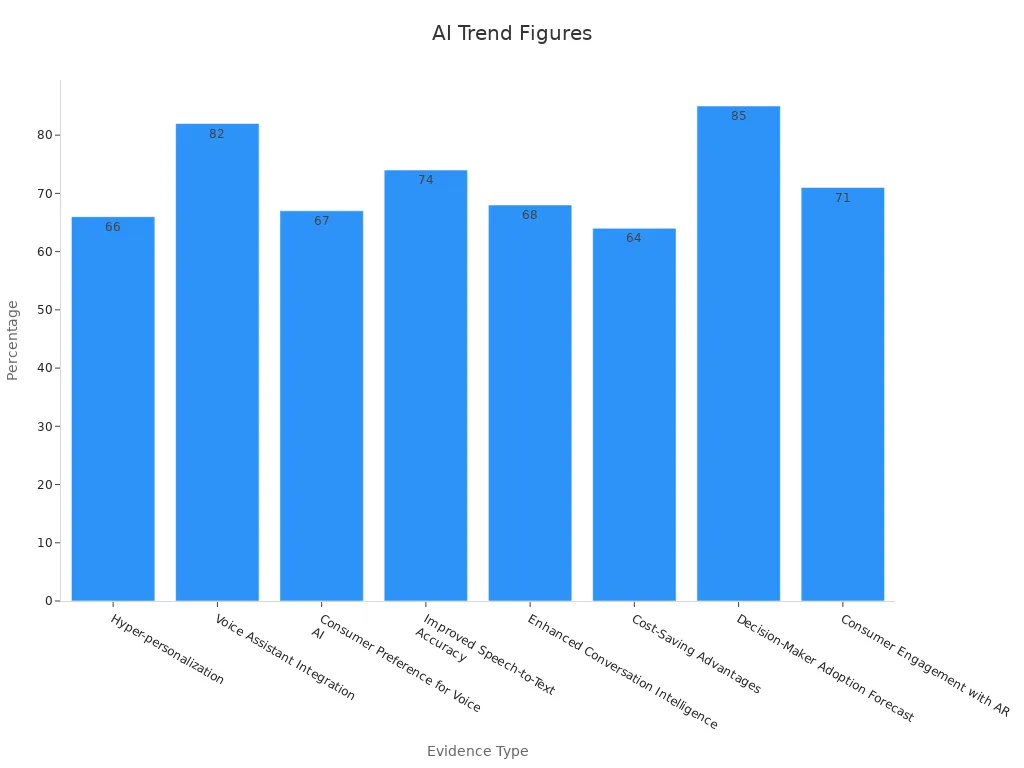
By understanding the strengths of conversational AI vs generative AI, you can choose the right tools to meet your business needs. Whether you aim to improve customer service or create engaging content, these technologies offer endless possibilities.
Applications of Conversational AI in Customer Service

Enhancing Customer Support with AI-Powered Chatbots
AI-powered chatbots have revolutionized customer service by providing instant, accurate, and consistent responses. These conversational AI tools handle routine queries, allowing human agents to focus on complex issues. For instance, Delta Airlines uses chatbots to provide flight information, improving operational efficiency and reducing waiting times. Similarly, Spotify employs chatbots to offer personalized music support, enhancing user satisfaction and loyalty.
| Company | Application | Benefits |
|---|---|---|
| Delta Airlines | Chatbot for flight information | Improved operational efficiency, reduced waiting times, enhanced travel experience |
| Spotify | Chatbot for music support | Enhanced user satisfaction and loyalty through personalized assistance |
The benefits of chatbots extend beyond efficiency. They provide 24/7 availability, ensuring customers can get help anytime. This constant accessibility increases service capacity and reduces the need for additional staff. Chatbots also collect valuable data, helping businesses understand customer needs better and streamline operations. By resolving common issues quickly, they significantly enhance customer satisfaction.
- AI chatbots offer instant support, leading to immediate customer assistance.
- They provide 24/7 availability, ensuring customers can get help at any time.
- They resolve common issues quickly, enhancing overall customer experience.
Real-Time Assistance in Contact Centers
Contact centers have embraced conversational AI to deliver real-time assistance, transforming how businesses interact with customers. AI systems provide instant responses, significantly reducing issue resolution time. This capability allows businesses to serve customers across different time zones, ensuring seamless support.
| Metric | Description | Importance |
|---|---|---|
| Response Time | Measures how quickly the chatbot replies to customer queries. | Short response times positively affect customer satisfaction. |
| Resolution Rate | Indicates the percentage of inquiries resolved without human intervention. | A high resolution rate signifies effective handling of customer queries. |
| Customer Satisfaction | Assessed through post-interaction surveys to gauge user satisfaction. | High CSAT scores reflect the chatbot's success in creating a positive customer experience. |
| Net Promoter Score (NPS) | Evaluates customer loyalty and likelihood to recommend the service. | A high NPS indicates customer happiness with chatbot interactions. |
Real-time data plays a crucial role in enhancing operational efficiency. AI tools enable immediate identification and resolution of performance issues, improving both customer satisfaction and service quality. In fact, 90% of contact centers report measurable improvements in resolution speeds when using AI tools. This efficiency ensures that your customers receive timely and effective support, fostering loyalty and trust.
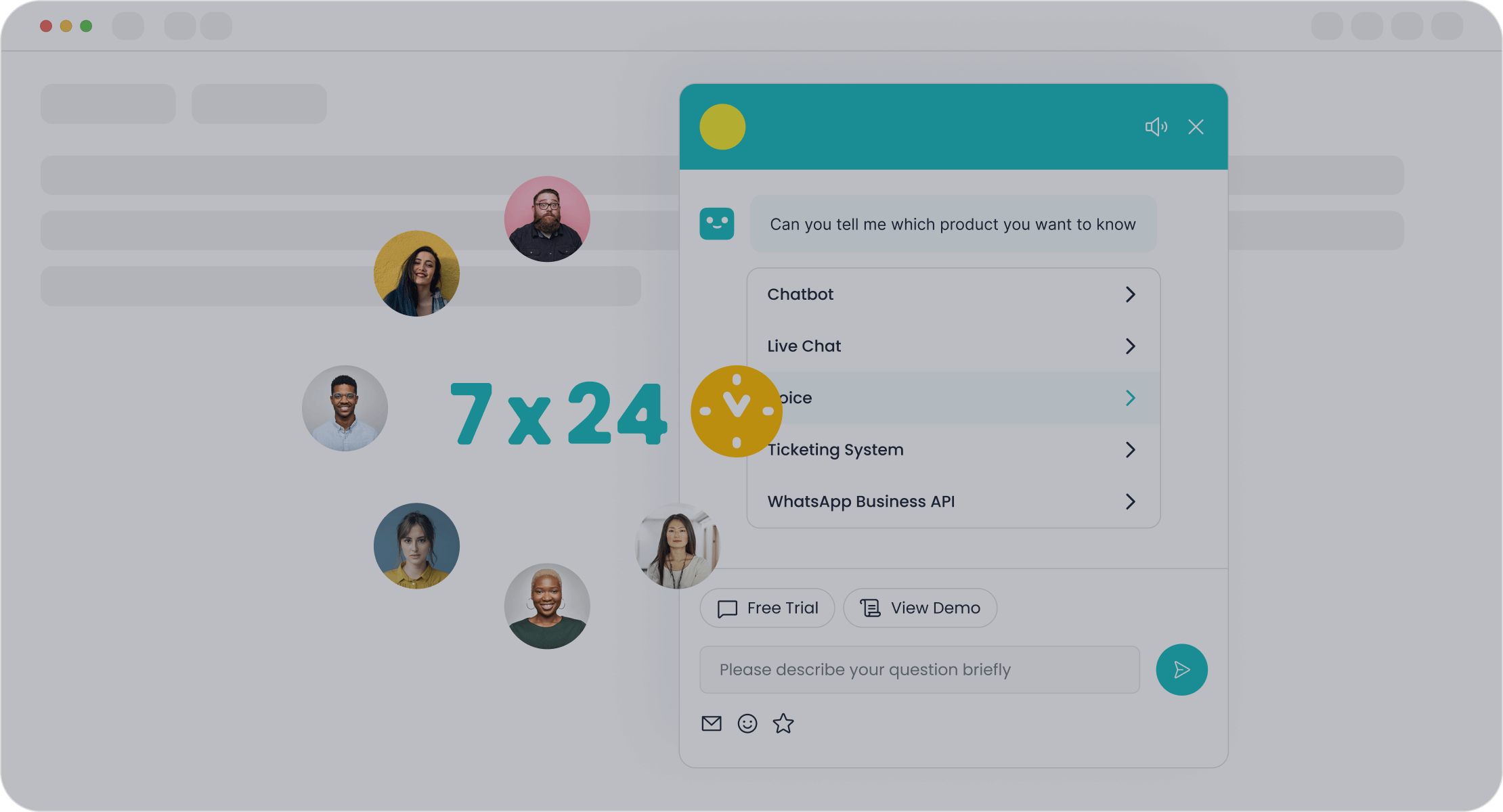
Sobot Chatbot: Revolutionizing Customer Interactions
Sobot's AI Chatbot stands out as a leading solution in automated customer service. Designed to handle routine queries autonomously, it improves productivity by 70% and reduces costs by up to 50%. Its multilingual capabilities and 24/7 availability ensure that customers receive consistent support across various channels.
| Metric | Value |
|---|---|
| Reduction in inbound discussion volume | 20% |
| Increase in positive feedback | 96%+ |
| Correct answers provided by AI | 80% |
| Customer satisfaction rate | 95% |
| Self-service question resolution | 22.2% |
| Problem resolution rate | 85% |
| Customer happiness rate | 99% |
| Sign-off rate increase | 35% |
| COD collection rate increase | 40% |
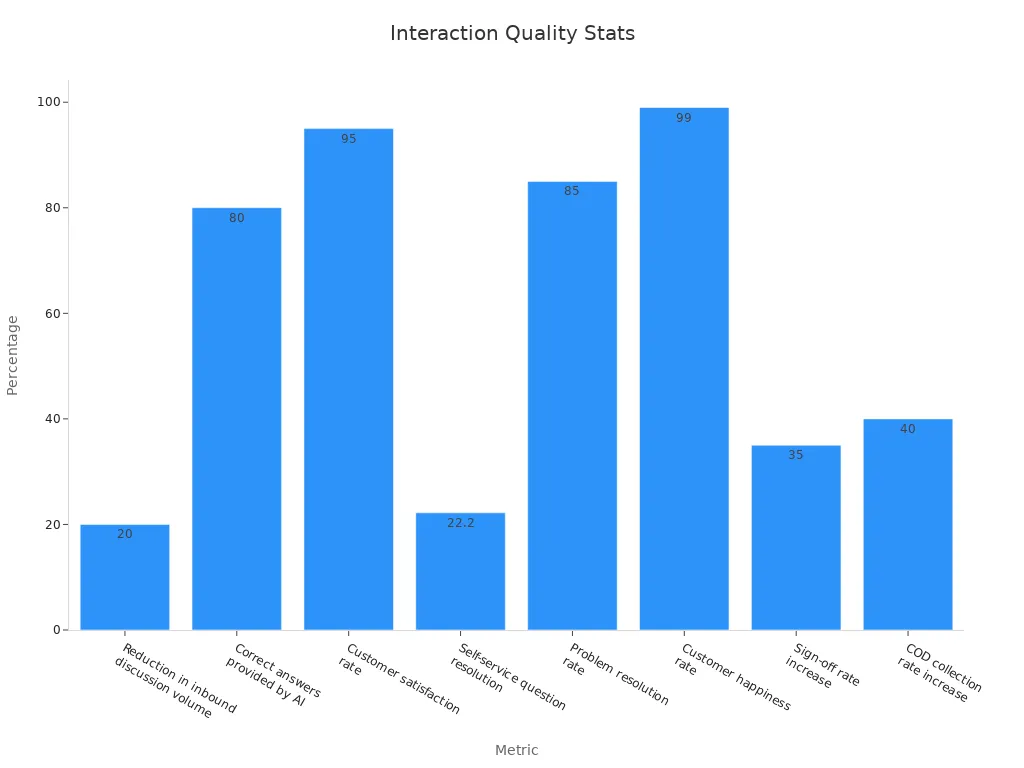
Sobot's chatbot also enhances customer satisfaction by offering smart self-service options and proactive messaging. It integrates seamlessly with platforms like WhatsApp and SMS, providing omnichannel support. By leveraging advanced conversational AI, Sobot helps businesses improve customer interactions, boost conversions, and achieve operational excellence.
Generative AI Use Cases in Content Creation

Automating Marketing Content for Businesses
Generative AI tools have transformed how businesses create marketing content. These tools automate repetitive tasks, such as drafting emails, creating social media posts, and designing ad campaigns. By using generative AI, you can save time and focus on strategic planning. For example, Sobot's AI solutions streamline content creation by analyzing customer data and generating personalized messages tailored to specific audience segments.
| Benefit | Description |
|---|---|
| Faster Campaign Development | Automates various marketing tasks, enhancing efficiency in campaign creation. |
| Data Analysis | Quickly analyzes large datasets for deeper insights into consumer behavior and market trends. |
| Personalized Experiences | Tailors content and campaigns based on individual user preferences for better engagement. |
Generative AI applications also improve efficiency by handling mundane tasks. This allows your team to concentrate on creativity and strategy. For instance, Sobot's generative AI capabilities enable businesses to create targeted marketing campaigns that resonate with their audience. By leveraging these tools, you can enhance customer engagement and drive higher conversion rates.
Personalizing Customer Engagement with AI-Generated Media
Generative AI excels at creating personalized media, such as videos, images, and audio, to engage customers. These AI-generated assets can be tailored to match individual preferences, making your marketing efforts more effective. For instance, you can use generative AI to produce dynamic product videos that showcase features relevant to each customer segment.
| Metric/Case Study | Description | Impact on Engagement |
|---|---|---|
| Customer Satisfaction | Demonstrates how AI-generated case studies highlight customer satisfaction through real-world applications. | Increased trust and credibility with potential customers. |
| Website Traffic | Tracking page views and time spent on case study pages. | Higher engagement rates and visibility. |
| Lead Conversion | Metrics related to conversions from case study content. | Direct correlation to improved conversion rates. |
Sobot's AI solutions empower businesses to create engaging, AI-generated media that captures attention and builds trust. By integrating generative AI into your marketing strategy, you can deliver content that resonates with your audience, fostering stronger connections and boosting customer loyalty.
Leveraging Generative AI for Knowledge Base Optimization
Generative AI plays a crucial role in optimizing knowledge bases. It can analyze vast amounts of data to identify gaps and generate new content, ensuring your knowledge base remains up-to-date. This improves customer support by providing accurate and relevant information. For example, Sobot's AI tools help businesses enhance their knowledge bases, reducing maintenance efforts and improving resolution rates.
- Generative AI can lead to a 15–20% increase in the number of new products or features developed.
- There is a 10–15% reduction in the number of bugs found in production.
- A 5–10% increase in customer retention and loyalty is expected.
- The time-to-market for new products or features can be reduced by 10–15%.
- Overall, an average of 60% productivity improvement across developer roles is anticipated.
By leveraging generative AI, you can ensure your knowledge base remains a valuable resource for both customers and support teams. Sobot's AI solutions make this process seamless, enabling you to deliver exceptional customer experiences while improving operational efficiency.
Strategic Value of Conversational AI vs Generative AI
Improving Customer Experience with Conversational AI
Conversational AI transforms customer experience by delivering instant, reliable, and personalized support. AI-powered tools like chatbots ensure customers receive accurate responses consistently, eliminating long wait times. These tools operate round-the-clock, providing assistance at any hour. For example, Sobot’s AI Chatbot offers multilingual support and smart self-service options, enabling businesses to cater to diverse customer needs effectively.
| Feature | Benefit |
|---|---|
| Immediate Responses | Prevents customers from waiting for assistance. |
| Reliable Accuracy | Ensures consistent and correct answers to inquiries. |
| 24/7 Availability | Provides support anytime, enhancing customer satisfaction. |
| Tailored Experiences | Delivers personalized suggestions based on preferences and history. |
By analyzing customer data, conversational AI creates tailored interactions that feel personal. This approach boosts customer engagement and satisfaction, fostering loyalty. Businesses using conversational AI report higher Net Promoter Scores (NPS), reflecting improved customer happiness and trust.
Streamlining Operations Using Generative AI
Generative AI optimizes operations by automating repetitive tasks and enhancing resource allocation. It reduces process completion times, allowing businesses to focus on strategic goals. For instance, Sobot’s generative AI capabilities streamline content creation, enabling faster campaign development and personalized marketing strategies.
| Metric | Description |
|---|---|
| Process Completion Time | Reduces the time required to complete tasks and processes. |
| Resource Allocation | Enhances workforce and resource distribution within organizations. |
| Cost Savings | Automation and optimization lead to lower operational costs. |
Generative AI also improves efficiency by analyzing large datasets to uncover actionable insights. This technology helps businesses reduce operational costs while maintaining high-quality outputs. By leveraging generative AI, you can achieve scalability and operational excellence.
Sobot AI Solutions: Driving Efficiency and Scalability
Sobot’s AI solutions combine conversational and generative AI to deliver unmatched efficiency and scalability. The platform automates routine inquiries, providing 24/7 support and freeing human agents for complex tasks. It enhances customer engagement through AI-driven voice and chat solutions, ensuring seamless interactions across channels.
- Sobot’s AI tools improve response rates by 15%-35% and accuracy by 5%-15%.
- Knowledge base maintenance workload is reduced by 80%, saving time and resources.
- Businesses using Sobot report higher customer satisfaction and operational efficiency.
Sobot empowers businesses to scale their operations while maintaining exceptional service quality. Its AI solutions optimize workflows, reduce costs, and enhance customer engagement, making it a valuable partner for businesses aiming to thrive in 2025.
Ethical Considerations and Future Predictions
Responsible AI Usage in Customer Service
Responsible AI usage in customer service requires adherence to ethical principles that prioritize fairness, transparency, and privacy. You must ensure AI systems operate lawfully and respect sensitive customer data. Risks associated with AI, such as unintended biases or errors, should be identified and mitigated through continuous monitoring. Implementing a responsible AI framework helps maintain compliance with organizational standards while fostering trust among users.
For example, AI systems should clearly present themselves as non-human entities to avoid misleading interactions. This transparency builds confidence in conversational AI tools, ensuring customers feel secure when engaging with them. Additionally, testing and profiling AI systems before deployment can prevent issues that might compromise service quality. By following these practices, you can create a customer service environment that balances efficiency with ethical responsibility.
Tip: Establish clear accountability for AI systems to address ethical concerns promptly. This ensures your business remains proactive in managing AI-related risks.
Addressing Bias and Privacy Concerns
Bias and privacy concerns remain critical challenges in AI implementations. Studies show that algorithmic bias can lead to discriminatory practices, especially in areas like recruitment or healthcare settings. For instance, biased datasets may result in unfair treatment based on gender or race. To address this, you should use unbiased dataset frameworks and improve algorithmic transparency.
Privacy concerns also demand attention. AI systems must safeguard sensitive data and communicate how it is used. For example, generative AI tools in personalized financial advice or personalized treatment plans should ensure compliance with data protection regulations. Ethical governance and oversight play a vital role in preventing discrimination and maintaining customer trust.
- AI can enhance fairness in legal contexts but requires frameworks to address privacy and data security.
- Research highlights the need for ethical management to avoid perpetuating biases in recruitment processes.
- Transparent AI systems improve engagement by providing clear reasoning behind decisions.
Trends and Advancements in AI by 2025
AI advancements in 2025 will reshape industries and redefine possibilities. Generative AI will continue to evolve, with competitive dynamics resembling past tech rivalries. Large Language Models (LLMs) may face challenges in sustaining enterprise ROI, but democratized AI reasoning will make advanced capabilities accessible to all. Explainability will emerge as a key driver of innovation, enabling AI systems to justify their decisions effectively.
In healthcare settings, AI will play a pivotal role in developing personalized treatment plans. Similarly, conversational AI will enhance customer engagement by delivering tailored experiences across industries. Predictions suggest software developers will increasingly adopt data science roles, reflecting the growing integration of AI in technical fields.
| Prediction | Description |
|---|---|
| AI reasoning gets democratized | Advanced reasoning capabilities will become widely accessible. |
| AI explainability drives innovation | Transparent decision-making will fuel future advancements. |
| AI talent augmentation becomes inevitable | Human capabilities will be enhanced through AI integration. |
These trends highlight the transformative potential of AI technologies. By staying informed and adopting innovative solutions like Sobot’s AI tools, you can position your business for success in this rapidly evolving landscape.
Collaborative Potential Between Conversational and Generative AI
The combination of conversational AI and generative AI offers transformative opportunities for businesses. Together, these technologies can enhance customer service, boost creativity, and improve operational efficiency. By integrating their strengths, you can create seamless, intelligent systems that deliver exceptional results.
Conversational AI excels at real-time interactions. It provides instant responses and personalized support. Generative AI, on the other hand, focuses on creating original content. When combined, these technologies can automate routine tasks while delivering creative solutions. For example, a chatbot powered by generative AI can craft human-like responses, making customer interactions more engaging and effective.
| Benefit | Description |
|---|---|
| Economic Growth | Conversational AI facilitates communication across languages, enabling better decisions and market expansion. |
| Productivity | Integration automates repetitive tasks, allowing employees to focus on higher-value activities. |
| Creativity | Generative AI supports idea generation, helping teams identify and develop innovative solutions. |
| Customer Service | A Fortune 500 firm reported a 14% improvement in issue resolution and a 9% reduction in call handling time. |
In customer service, this collaboration can revolutionize how you interact with customers. Imagine a chatbot that not only answers questions but also generates personalized recommendations based on customer preferences. Sobot’s AI Chatbot already demonstrates this potential. It combines conversational AI with generative capabilities to provide multilingual, 24/7 support. This integration improves resolution rates and enhances customer satisfaction.
The collaborative potential extends beyond customer service. Generative AI can analyze data from conversational AI interactions to identify trends and gaps. This insight helps you optimize your knowledge base and refine your strategies. Businesses leveraging this synergy report higher productivity and creativity, as employees can focus on strategic tasks instead of repetitive ones.
By embracing the collaboration between conversational AI and generative AI, you can unlock new levels of efficiency and innovation. These technologies work together to create smarter systems, helping your business thrive in an increasingly competitive landscape.
Conversational AI and generative AI play distinct yet complementary roles in transforming business operations. Conversational AI excels in real-time customer interactions, offering instant and personalized support. Generative AI, on the other hand, drives creativity by automating content creation and optimizing knowledge bases. Together, they empower businesses to enhance customer satisfaction, boost productivity, and achieve operational excellence.
For instance, 34% of organizations report revenue increases, while 40% see improved client ratings by integrating these technologies. Additionally, businesses save an average of $4.3 million in staffing costs.
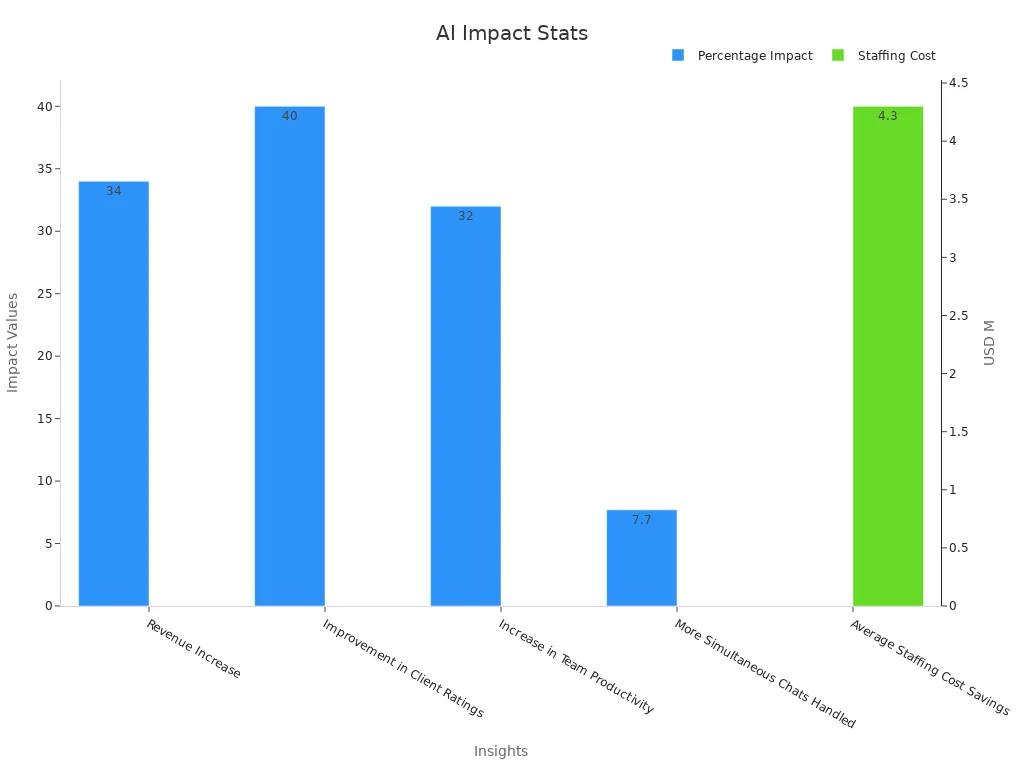
Sobot’s AI solutions seamlessly combine these technologies, enabling businesses to scale operations and deliver exceptional customer experiences. By adopting Sobot’s tools, you can stay ahead in 2025’s competitive landscape.
FAQ
What is the main difference between conversational AI and generative AI?
Conversational AI focuses on real-time interactions, like chatbots and virtual assistants, while generative AI creates original content, such as marketing copy or videos. For example, Sobot’s AI Chatbot uses conversational AI to provide instant support, whereas its generative AI tools optimize knowledge bases and personalize customer engagement.
How can Sobot’s AI Chatbot improve customer service?
Sobot’s AI Chatbot enhances customer service by resolving routine queries autonomously, improving productivity by 70%. It operates 24/7, supports multiple languages, and integrates with platforms like WhatsApp. This ensures consistent, efficient, and personalized customer interactions, reducing costs by up to 50%.
Can generative AI help with marketing campaigns?
Yes, generative AI automates tasks like drafting emails and creating social media posts. Sobot’s AI solutions analyze customer data to generate personalized messages, helping businesses save time and improve engagement. This leads to faster campaign development and higher conversion rates.
How does Sobot ensure data privacy in its AI solutions?
Sobot prioritizes data security with features like GDPR compliance, encryption, and continuous backups. These measures ensure your customer data remains safe while leveraging AI technologies for customer service and content creation.
Why should businesses combine conversational AI and generative AI?
Combining these technologies enhances efficiency and creativity. For instance, Sobot’s AI Chatbot uses generative AI to craft human-like responses, improving customer satisfaction. This synergy automates routine tasks while delivering personalized, engaging experiences, helping businesses scale operations effectively.
See Also
Best 10 AI Solutions for Business Call Centers
Comprehensive Guide to AI Software for Call Centers
Best 10 Sites Utilizing Chatbots This Year